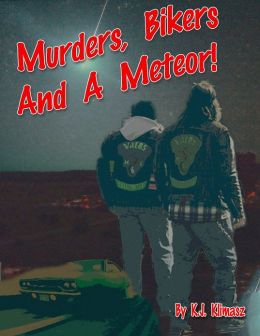 Description: For Harry Dresden, Chicago's only professional wizard, business, to put it mildly, stinks. So when the police bring him in to consult on a grisly double murder committed with black magic, Harry's seeing dollar signs. But where there's black magic, there's a black mage behind it. And now that mage knows Harry's name.
Description: For Harry Dresden, Chicago's only professional wizard, business, to put it mildly, stinks. So when the police bring him in to consult on a grisly double murder committed with black magic, Harry's seeing dollar signs. But where there's black magic, there's a black mage behind it. And now that mage knows Harry's name.Review: I was really excited to read Storm Front because it took place in my hometown of Chicago, it features a male protagonist, and I hear nothing but rave reviews every time a new book in the series is released. So, I naturally am curious to see what the fuss is about. I'm happy to say that I enjoyed this book and look forward to getting to know more about Harry as I continue this series.
As the first book in the Dresden Files series, Butcher doesn't suffer his readers by dumping huge piles of boring information. We are slowly introduced to Harry Blackstone Copperfield Dresden, a wizard who also happens to be a private investigator stationed in Chicago where paranormal creatures and magic runs amok.
Harry is a very likable hero, a honest guy who doesn't catch many breaks. He is smarter than people give him credit for being and has a noble streak that gets him in trouble, mostly due to poking his noise in matters that he should avoid. His strong sense of justice and his own ideas of right and wrong set him at odds with the powers that be. His moral compass leads Harry in very difficult situations and he has to use his wit and power to get himself out of them. Of course, Harry isn't just another trenchcoat wearing, Chicago roaming, sarcasm spewing, private detective. He's a wizard living in a world not too dissimilar from ours, trying to make a life from a talent that's part blessing and part curse. Not to mention that he continuously bumps heads against authority, both mortal and non-mortal, while doing what he thinks is right and trying his best to protect his fellow humans and paranormals/supernaturals from the evils that roam -- and often, each other. Harry and I got along quite well as I loved his dry, sarcastic humor. Not much his British skull side-kick named Bob who loves his romance novels. There are a tons of other secondary characters such as Toot Toot, the pizza loving faery; Mister, Harry’s enormous grey cat whose father had to be a wildcat or lynx; Mac, the taciturn bartender of McAnally’s; Susan Rodriguez, beautiful reporter for the ChicagoArcane, who flirts with Harry to get a lead on the double murder he’s investigating – or maybe for other reasons; sword wielding Morgan, Warden of the White Council, looking for any sign of Harry’s guilt – past or future; Bianca, madam of the Velvet Room and a vampiress you'll never forget; Gentleman Johnny Marcone, a mob boss who wants to hire Harry not to investigate; and other assorted witnesses, missing-persons, clients, and client-wannabes – all well drawn and fascinating.
There is action, suspense and mystery as Harry starts investigating two murders that may or may not be related. The plot kept me engaged as it is fun to get to know Harry and start to understand his relationship with the ‘magic’ world. We are given small hints about his past as well as his connections to secondary characters in particular Lieutenant Karrin Murphy, Director of Special Investigations, who begrudgingly asks Harry for help.
While not too serious, Storm Front is a fun, quick read. As a side note, the audiobook is read by James Marsters of Buffy fame and does an incredible job in narrating the book. If you don't have time to read the physical book, please do check out the audiobook. I'm really looking forward to continuing the series and already have the second book on hold from the library.
Rating: 4 stars
Words of Caution: There is some strong language and violence as well as sexual situations/innuendo in the book. Recommended for mature teens and adults only.
If you like this book try: Fool Moon (Dresden Files #2) by Jim Butcher, Iron Druid Chronicles by Kevin Hearne, Child of Fire by Harry Connolly, Fated by Benedict Jacka
















